 |

| |
|
Books on eBay ??? 
|

by Akira Kato
May 24, 2002
Origin and Development of Ancient Civilizations Definition of Civilization
Conditions giving rise to civilization
Some ancient empires and kingdoms in the Near East before the rise of Persia
Origins of Persia Migration of Indo-European peoples into Indo-European Social Organization
Persian Empire (530-323 BC) Ruled by Achaeminid dynasty
Rise of Persian Empire Conquests of Cyrus the Great (Kyros) Ruled 560-530 BC
Tomb of Cyrus (d. 530 BC) "I am Cyrus. I established the Persian Empire and was King of Asia. Do not begrudge me my memorial." Persian Conquest of Egypt under Cambyses (Kambyses) Death of Cambyses in 522 BC Darius the Great r. 521-486 BC Reign of Darius
Reliefs from the Apadana Staircase in Darius' palace complex in Persepolis. Persian nobles (who had once resisted Darius' rule) are bringing him flowers on New Years Day Indirect Rule Relied on and preserved local political traditions Accepted ethnic diversity Practiced religious toleration The reliefs featured above (Apadana Stairs, Persepolis) depict some of the
peoples within the Persian Empire Persian Satrap System Approx. 30 Provinces (Satrapies), each corresponding to a specific subject population Each ruled by a governor (Satrap) The map to the right shows the satrapies The map below shows the satrapies in Asia. The map below shows the satrapies in Asia Minor. The Wars of Darius Put down 19 rebellions in the Empire The Carvings in the
Cliffs of Behistun depict Darius ( with his foot on the body of the
rebellious priest Gaumata), Note the winged figure
of Note also the Inscriptions,through which Darius narrates the history of his reign. Persian Religion ZOROASTRIANISM Zoroaster (Born 660 BC) Ahuramazda Persian Empire in 500 BC Note especially the following lands and territories: Note also the
expansion of the Persian Empire into regions inhabited by Greeks Ionia Ancient Greece Minoan & Mycenaean Civilizations. 2000 - 1150 BC Minoan and Mycenaean
Heroic Age of Homer’s Epic Poems
This 5th century vase depicts Odysseus, tied to the Archaic Period Colonization of Eastern Mediterranean coast trade Emergence of the Polis Greek Religion Polytheistic Temples were homes of the Gods Religious festivals (120 days per year) Mystery Religions Economy & Society in Classical Greece Mediterranean agriculture
Greek Drama Festival of Dionysis in Athens Famous Playwrights
Major Ionian Greek City States Rhodes Revolt of the Ionian Greeks (499 - 494 BC) Joint Persian-Ionian Greek
expedition against Naxos Persian Wars 500 - 468 BC Herodotus
492 BC: Darius sends invasion force to Greece Athens formes Delian League, 478 BC United many Greek City
states Peloponnesian Wars, 460 - 404 BC Athens vs.
Sparta Classical Greece 500 - 340 BC Highpoint of Greek civilization Based on the Polis (city state)
Spartan Society Citizens: 13,500 Highlights of Peloponnesian Wars Athenian invasion of Sicily,
413 BC The Hellenistic Era Time Line: Hellenistic Era 359-336 BC-- Reign of Phillip of Macedonia 336-323 BC-- Reign of Alexander the Great 323-30 BC -- Hellenistic Monarchies Rise of Macedonia Philip of Macedonia (ruled 359-336 BC) Lived as hostage in Thebes, 371 - 365 BC duringt the Theban Supremacy, 371 - 338 BC Epaminondas of Thebes taught Philip importance of well-trained infantry: 1. longer spear (sarissa) 2. better trained infantry (phalanx) 3. combined use of cavalry and infantry Philip becomes King of Macedonia, 359 BC Macedonian coin
with Philip's head, 4th c. BC. Philip conquers Greece, 352 - 338 BC The map to the right traces Philip’s conquest of Greece. 1. The arch at the top portrays the non-aggression treaty that Philip signed with Persia in 343-342, which gave him a free hand to conquer Thrace. 2. Note also the city states belonging to the League of Corinth
(Korinthischer Bund) bottom left. As Alexander the Great (356-323 BC)
Coin with head of Alexander (4th c. BC). Just as with Philip's coin above, Alexander is identified with Hercules. In this case, by the Lion's head, a symbol of Hercules. Alexander conquers 3 major battles
Political Structure of Hellenistic World Diadochi (Alexander's generals)
Major Hellenistic Kingdoms Macedonia Seleucid Empire Egypt Seleucid Kingdom Kingdom of Macedonia Antigonid
dynasty Coin of Demitrius, the first Antigonid king of Macedonia. Note the
Diadem, the band around the head that was the Hellenistic symbol of
royalty. Note also the horn, symbolizing (in imitation of
Alexander) Seleucid Empire Syria, Persia, and Babylonia Largest of the Hellenistic Kingdoms Coin of Seleucus I Egypt Ptolomaic Dynasty Coin of Ptolemy I (c. 4th BC) Note the Diadem, also the eagle with thunderbolts on the reverse, symbolizing the god Zeus. Smaller Hellenistic Monarchies in Asia Minor Pergamon Pontus Bythnia Leagues of Greek City States The Hellenistic World Mixture of classical Greek and Near Eastern Cultures Syncretistic religions Mystery Religions offered hope of an afterlife Example: Cybele (the Anatolian Great Mother) Hellenistic Art Exaggerated proportions Heightened sense of drama Heroic poses The Rise of Rome Italy ca. 500 BC Greeks-south Latins-central & south Etruscans-central & north Gauls - north Italy, ca. 500 BC Roman Patrician 1st Punic War 264-241 BC Fought mainly in Sicily Roman naval victory 241 BC 2nd Punic War 218-201 BC Hannibal, 247-183 BC Hannibal invades Italy 218 BC Lake Trasimene 217 BC Cannae 216 BC 2nd Punic War after Cannae Capua joins Hanniba l Rome retakes Capua 211 BC Hannibal retreats to S. Italy Romans invade Spain, drive out Carthagenian army, 208 BC. Rome invades Carthage, 204 BC Hannibal returns to Carthage, 202 BC Defeated at Zama by Scipio Africanus, 202 BC Results of 2nd Punic War Carthage loses Spain Rome sets up Numidia as client state to help control Carthage Rome now controls the Western Mediterranean. What do we learn from the Punic Wars? 1. Force and Violence have often determined the course of history. 2. As Clausewitz (d. 1832) pointed out, "War is the pursuit of political aims by other means". Hannibal's experience in Italy reveals the futility of military victories when they are not accompanied by realistic political aims. 200-168 BC: Rome becomes dominant power in Hellenistic World Philip V of Macedonia her major adversary Also Antiochus III of Seleukid Kingdom Ist Macedonian War, 215-205 BC Philip V of Macedonia allies with Hannibal 2nd Macedonian War, 200-196 BC Rome defeats Philip V Declares Greece a Roman protectorate Syrian War 192-188 BC Antiochus III defeated by Rome at Battle of Magnesia, 190 BC Peace of Apamea, 188 BC Seleukid naval power abolished Seleukids lose holdings in Asia Minor Rome thus becomes the dominant power in Hellenistic East Rome defeats Macedonia at Battle of Pydna 168 BC Rome abolishes Macedonian Kingdom Declares Macedonia & Greece a Roman province Rome destroys Carthage Population sold into slavery Carthage becomes a Roman province Rome inherits Pergamum from Attalus III, 133 BC Conquers Numidia in Jugurthine War 111-105 BC Position of Rome in the Hellenistic World ca. 100 BC Macedonia Greece Asia Minor Rome as a Republic, 500 - 30 BC An aristocratic republic. Roman aristocracy: The Patriciate. Power and Authority in the hands of the Senate (300 members) Roman Officials (Magistrates) Only members of aristocracy could stand for office Two magistrates elected to each office One year term Senior magistrates: Praetors and Consuls plebes (the common
people) The figure
at the right is a statue of a Roman patrician ca.1st c. BC Rome in Crisis Symptoms of Crisis Decline of small farmers in Italy Slave revolts 136-71 BC Growth of proletariat in Rome Piracy in E. Mediterranean Revolt of Rome's allies in Italy (91-88BC) Revolt in Asia Minor (88-64BC) Rise of military dictators Mithridates, King of Pontus, 132 - 63 BC Leads revolt against Rome 88-62 BC Massacre of 80,000 Romans in Asia Minor in 88 BC Defeat of Roman Legions and execution of Roman Governor Note how Mithridates identifies himself with Alexander by having himself portrayed with the Lion’s head and mane (a typical form in which Alexander was portrayed) Note also the particularly vivid and dramatic rendering typical of late Hellenistic sculpture Rise of Sulla Consul in 88 BC Sulla’s Military Dictatorship 82-79 BC Rise of Pompey and Crassus Crassus puts down Spartacus revolt, 71 BC Crassus (pictured on the right) was reputedly the wealthiest man in Rome Julius Caesar 100 - 44 BC Rise of Caesar 60 BC: 1st military command, Spain 59-54 BC: 1st Triumvirate (Caesar, Pompey, Crassus)60 BC Rise of Caesar (continued) Elected consul in 59 BC Roman Civil War Caesar invades Italy, 49
BC Caesar as Dictator 45 - 44 BC Assassination of Caesar 44 BC Roman Civil War II 2nd Trumvirate: Octavius, Marc Antony, and Lepidus Octavius Triumphant Battle of Phillipi, 36 BC Reign of Augustus, 27 BC - 14 AD 27 BC - Imperator Caesar Augustus Augustus 27 BC - AD 14 Basis of Augustus support:
Augustus' Provincial Reorginization Augustus gets Gaul, Syria, Spain, Cilicia, Egypt Senate controlls the rest Augustus and the Army Problem of Military Dictators The Imperial Elite: Senate (600) Administration of Empire Municipal Elites (Decurionate) Roman Empire overrun Role of the Emperor (Princeps) Sole Commander of Army Roman Empire at its Height Note the frontiers: 1.Scotland in the north 2. The Sahara desert in the south 3. The Caspian Sea in the East 4. The Atlantic in the west Roman Empire as a Network of Cities The Roman Imperial bureaucracy was not large enough to carry out the day to day tasks of imperial governance like tax collection, rendering of justice, maintenance of bridges and roads, policing, etc. These tasks were left largely to the local elites serving on municipal councils (the Decurions) who were essential for governing the empire even though they had no official status within the imperial bureaucracy Note on the map the areas with the most and the largest cities: Western Asia Minor, Syria, and the regions of N. Africa around Carthage. Christianity would grow quickly in these regions. Rise of Christianity 1st-4th centuries AD Note carefully the representation of Christ in this 6th century mosaic
in Ravenna, on the Adriatic coast of Italy. The mosaic portrays Christ in
the uniform of a Roman military officer. This Judea in the Age of Christ Political Groups Herodians Sadducees Pharisees Essenes Note carefully the following points on the map of Palestine, which became the Roman province of Judaea in 6 AD: Herod's royal city, Caesaria, became the Roman capital of Judaea The Jewish temple in Jerusalem was the center of the traditional (as opposed to pro-Roman) religious elite in Judaea Essene communities were located around Qumran, on the Dead Sea Jesus was a Galilean, and spent most of his brief career as preacher and religious leader in Galilee, which was really a frontier region north of Judea Saul of Tarsus (5 - 67 AD) (St. Paul) Early missions in Asia Minor & Greece As the map shows, Paul's missionary activities focused on the relatively well educated urban populations (especially the Jewish communities) of the Hellenistic world -- Greece, Asia Minor, and Syria Triumph of Christianity in the 4th century ADGradual withdrawal of local elites (Decurions) from civic life Decline of Paganism The Roman elite embraces Christianity The 4th century statue to the right depicts an unknown Roman Emperor. Everything about the sculpture expresses Roman imperial power in its traditional forms, except that in his right hand the Emperor brandishes a cross, the symbol of Christianity. It is hard to imagine a more vivid image of the trimumph of Christianity in the Roman world.
Edict of Milan, 313
AD grants toleration to Christians Constantine permits
Christians to bequeath wealth to the Church
Recognized the jurisdiction of Church courts
Emperor
Theodosius (394-395) makes Christianity the official religion of the Roman
Empire
This image of
Theodosius clothes him in Hellenistic symbols of rulership (the Diadem and
the Halo), as well as in the cloak of a Roman general. Nevertheless, there
is an unworldly or otherworldly quality that hints at the withdrawal of
the Christianized Roman elite from worldly affairs.
Martin of Tours 336-397 AD
Model of pagan
conversion to Christianity
This 14th century painting by Ambrogio Lorenzetti shows Martin dividing
his cloak with the beggar
St. Augustine
(354-430) St. Augustine
Father of Christian Theology
Born & raised in Africa
Bishop of Hippo in N. Africa
Theology:
Doctrine of Original Sin
Christian Conscience (The
Confessions of St. Augustine)
Doctrine of Two Worlds
(The City of God)
This 6th century fresco of
Augustine shows him teaching monks. Monasteries did not exist in
Augustine's time, but by the 6th century, monasticism had emerged as the
ideal model of Christian life. Thus the inclusion of monks in this fresco.
The major proponent of Christian asceticism
Against Jovian (argued for celibacy)
Vulgate (Latin transl. of Bible)
Definition of Asceticism:
Renunciation of physical and sensual pleasures of the world in pursuit of
a closer union with God
Father of monasticism
Eremetic (solitary) monasticism
Father of Western Monasticism
Benedicts Rule, a guide for Cenobitic (communal) monastic life
Monte Cassino monastery
Life in the Monastery
Prayer Supervision of agricultural production Education: Latin Orthography
Copying the Bible on vellum
Victory of Christianity
Emperor Constantine 306 -
337 Monasticism
Begins in Egypt with St.
Anthony Life in the
Monastery
Prayer Saints
St. Martin of Tours 316 - 371 Break up of the Roman Empire ca. 500 - 450 AD
German successor kingdoms in
Western Europe and & N.
Africa Byzantine Empire
eastern part of empire
Asia
Minor German successor kingdoms in
Western Europe and & N.
Africa Successors of the
Roman Empire
Byzantine Empire Byzantine Empire
eastern part of
empire Islamic World, 570 - 752
AD
Muhammed (570 - 632 AD) 1st Period of Islamic Expansion,
632 - 661 AD
conquest of Palestine, Syria,
Persia, Egypt 2nd Period of Islamic expansion
662 - 732 AD
conquest of N. Africa and
Spain Break-up of Arab Caliphate into
smaller kingdoms
Spain Germanic Europe
migration of Germanic tribes around
500 - 600 AD Britons vs. Anglo-Saxons
King Arthur killed in battle 539
AD Christianization of Britian
579 AD - Pope Gregory sends a
missionary to christianize the Anglo-Saxons Venerable Bede, 673 - 735
became monk in monastery in Jarrow
(Northumberland) The Franks
Clovis (ruled 482 -
511)
Founded Merovingian
dynasty Stories about
Clovis
the warrior and the golden dish
stolen from monastery
| |

| ||








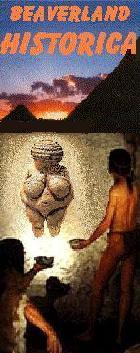



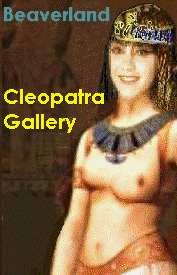












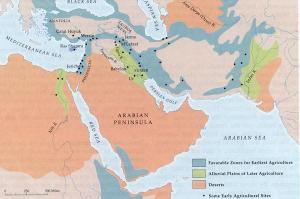



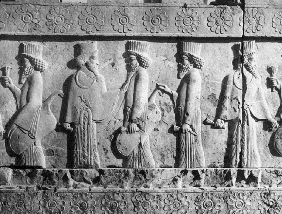


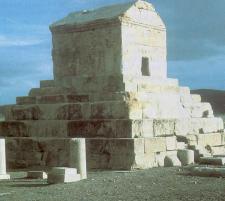

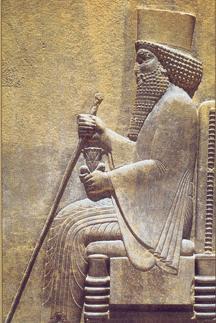
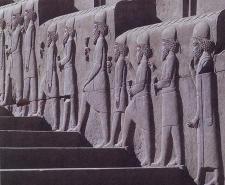


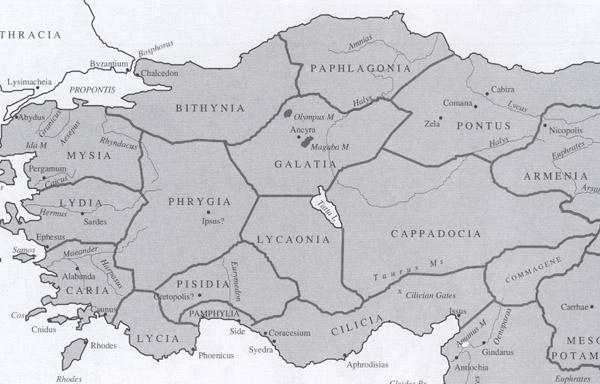
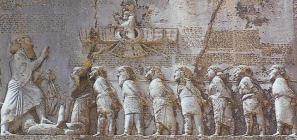
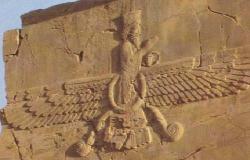


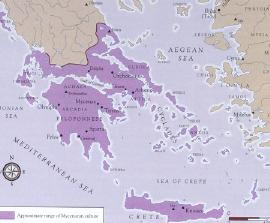
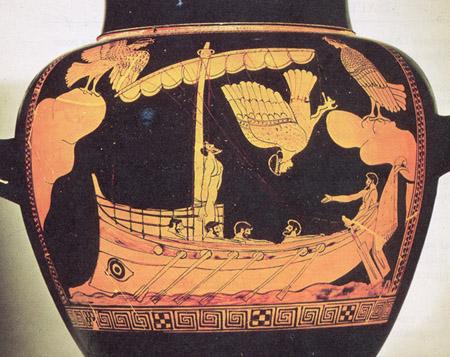
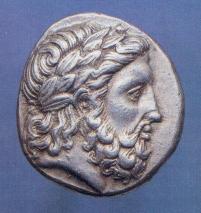

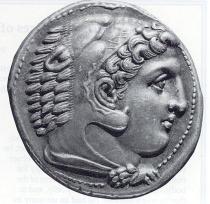


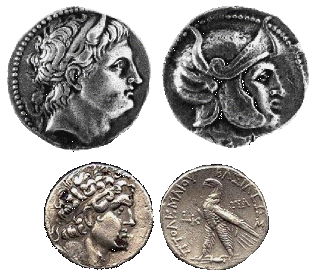
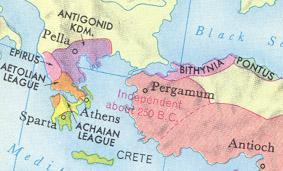
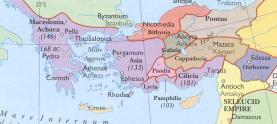
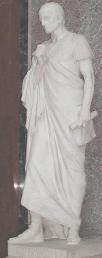
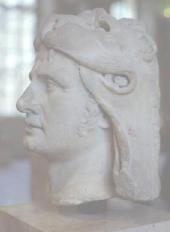
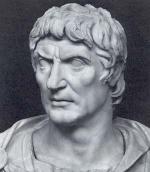
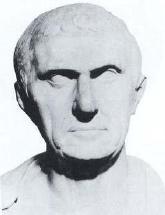
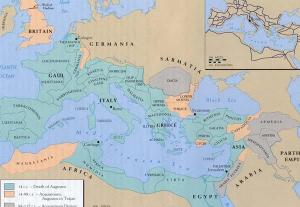
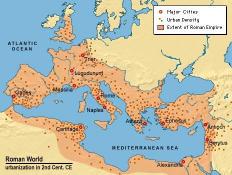
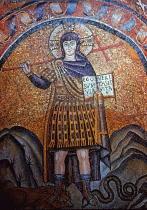
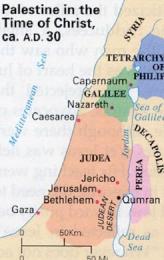
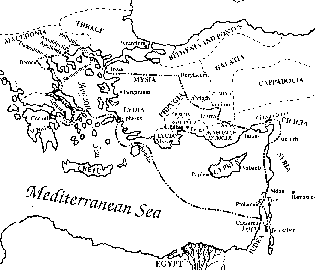
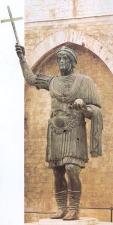
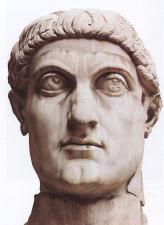

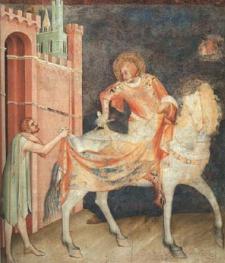



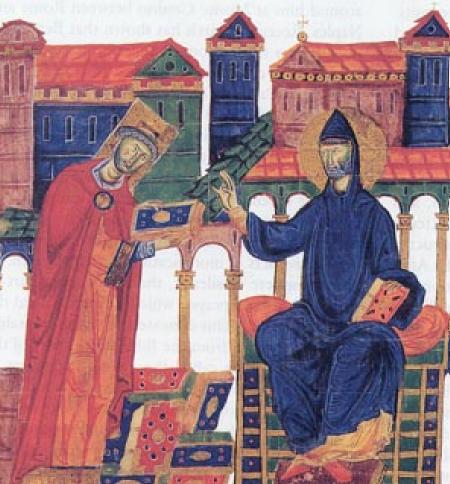
 to the Middle Ages
to the Middle Ages